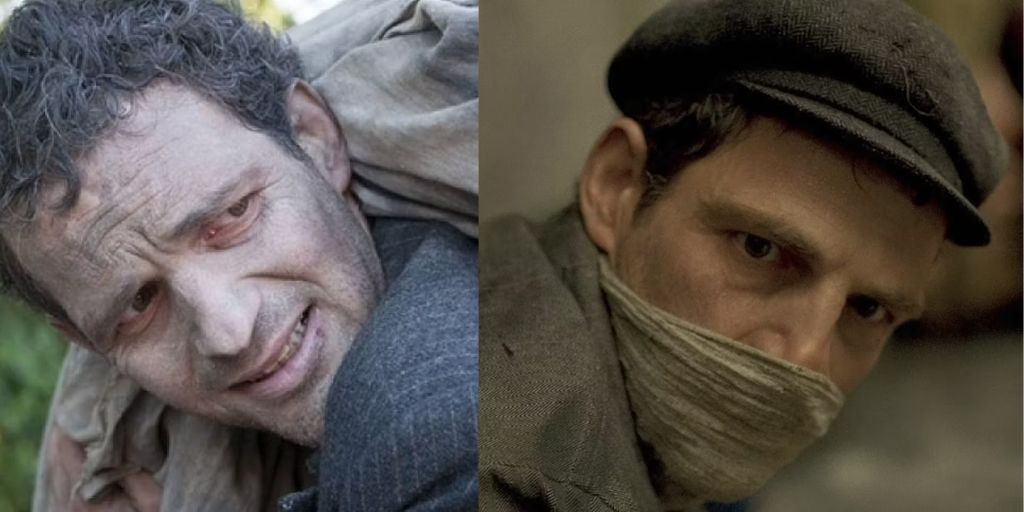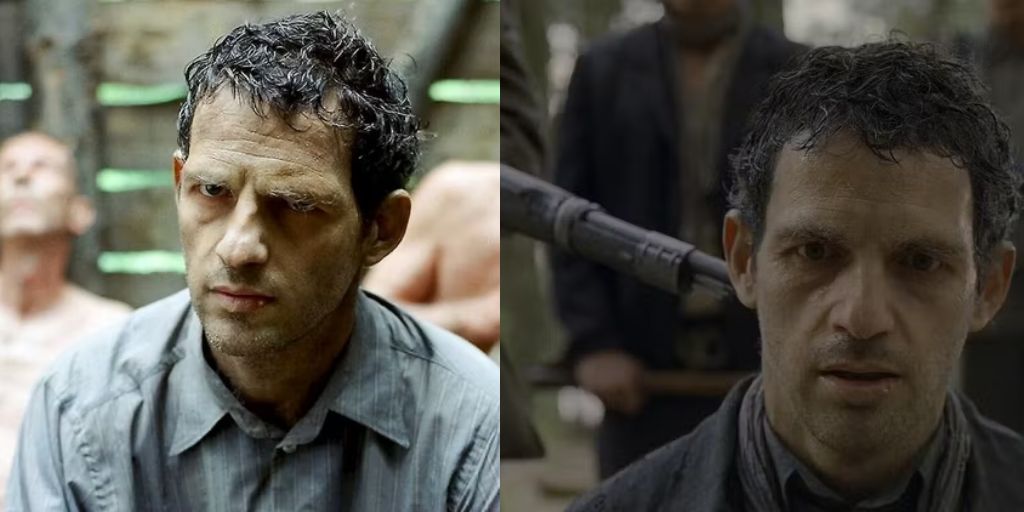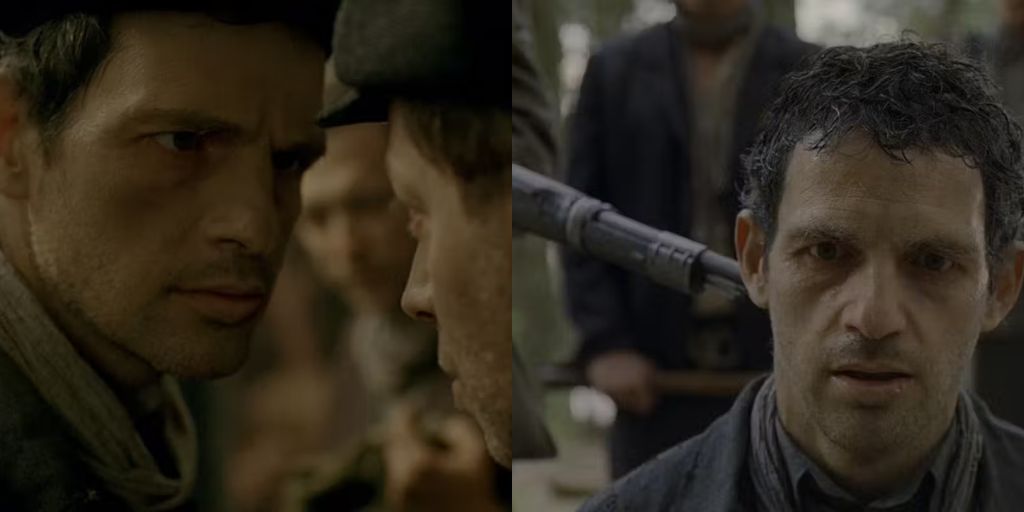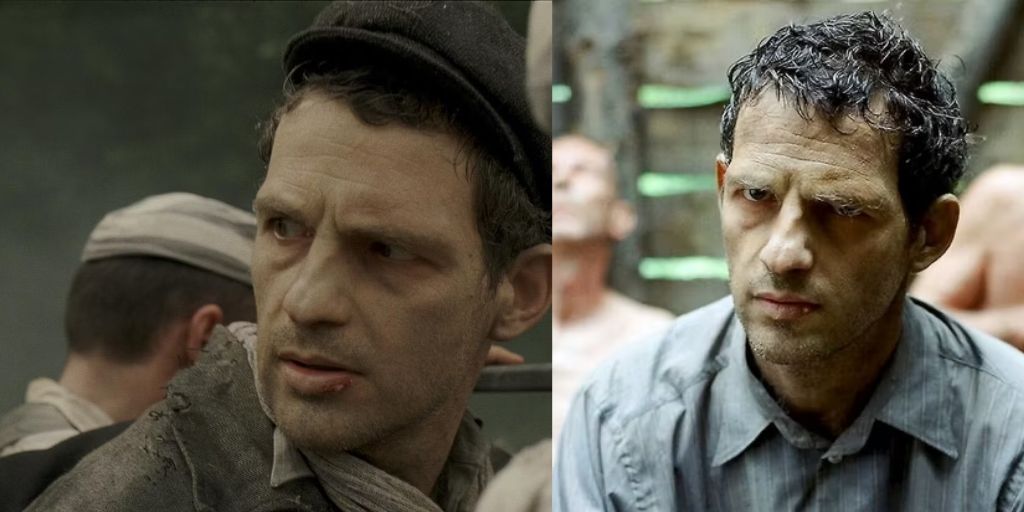The Holocaust stands as one of the most horrific events in human history, inspiring some of cinema’s most powerful narratives. Steven Spielberg’s Schindler’s List offers a gripping tale of rescue and survival, focusing on both the unexpected German rescuer and the persecuted Jews.
The Oscar-winning film The Pianist immerses viewers in the resilience of Jewish Holocaust survivor Władysław Szpilman, portrayed by Adrien Brody. In the intense 2015 Hungarian historical drama Son of Saul, co-writer and director László Nemes, in his Oscar-winning directorial debut, takes a different approach.
He presents the grim reality of Nazi-occupied Poland’s Auschwitz concentration camp, centering the story on a Jewish prisoner forced to assist the Nazis in their brutality.
Son of Saul is a difficult film to watch. Nemes uses a relentless and claustrophobic perspective, keeping the camera close to the protagonist, Saul Ausländer (played by Géza Röhrig), while everything else remains blurred or at the edges of the frame.
This choice creates an intense tension, letting the audience experience the horrors of the Holocaust in a disturbingly personal way. Unlike other films that place viewers beside the protagonist, Son of Saul takes you into Saul’s mind, where he is nearly detached from life and his surroundings.
As you follow his journey, you witness the atrocities, horrors, and terror from his singular perspective. Despite his privileges, Saul’s experience in the camp is harrowing and unreal, making the fear and unimaginable inhumanity of the Holocaust all too real.
What Is ‘Son of Saul’ About?
Set in the Auschwitz concentration camp, Son of Saul begins with a wide shot of blurry figures. As they approach the camera, they come into focus, revealing Saul’s hollow-eyed face.
Saul Ausländer, a Hungarian-Jewish prisoner, performs his grim duties as a member of the Sonderkommando, a unit of Jewish prisoners tasked with leading fellow prisoners to the gas chambers for extermination in exchange for small privileges.

In the film’s bold opening sequence, Saul witnesses the strangulation of a boy who survived the gas, and he believes this boy to be his son. Overcome with the need to provide a proper burial, Saul goes on a dangerous quest within the camp to find a rabbi who can perform the Kaddish, the Jewish prayer for the dead.
This obsession with providing a proper burial becomes the central focus of Son of Saul. Saul’s immediate challenge in finding a rabbi is that simply identifying someone as a rabbi could mean instant death. He also must form dangerous alliances, including with Nazi guards.
Through Saul’s journey, the film reveals the horrific conditions of the camps, such as prisoners being stripped naked and herded, Sonderkommando members disposing of victims’ bodies, and the constant uncertainty of survival.
Saul’s deadpan expressions as he cleans up the gas chambers highlight how the brutality has become routine. However, unlike many Holocaust films, Son of Saul is not about survival. It’s a film about Saul’s unwavering determination and a symbol of resistance and humanity in the face of insurmountable obstacles and unimaginable evil. The portrayal of Saul’s journey is deeply moving and heartbreaking.
‘Son of Saul’ Offers a Stark Perspective on the Holocaust
Few Holocaust films handle the subject matter as rawly as Son of Saul. Films like The Grey Zone, based on the testimony of Auschwitz doctor Miklós Nyiszli, the documentary Shoah, and Jonathan Glazer’s adaptation of Martin Amis’ novel The Zone of Interest share a similar approach.
Son of Saul bravely follows in the footsteps of Kapò, both films focusing on complex Jewish characters forced to work for the Nazi Germans to the detriment of their fellow Jews. While Kapò emphasizes the need for survival, Son of Saul delves into the conscience of its protagonist.
Among these films, Nemes’ Son of Saul offers a unique perspective, refusing to impose emotions on the Holocaust’s horrifying story. “Classical storytelling in the camp doesn’t make sense.
[They] project emotions onto a story that just didn’t have them. For example, we think everyone was crying, but people were stunned, in shock, in trauma; the wake-up arrived later,” Nemes explains.
Nemes’ realism is reflected in the film’s singular perspective through Saul. According to Nemes, Holocaust victims had limited information about what was happening, which influenced his decision to focus the camera on Saul while everything else is blurred, at the edges, or off-screen.
In the film, the background of Saul’s main frame is filled with haunting sounds—dogs barking, marching boots, voices in different languages—some shouting orders, others screaming in pain, and others just sounds of people and machines at work.
The film’s auditory setting intensifies the audience’s experience of Saul’s world. We rarely see the details of the horrors; the dead bodies are shown out of focus, except for the boy Saul is concerned with, but the constant sound of death lingers.

With Saul seemingly numb to the events around him, we only see and experience what he sees and experiences. This shallow depth of field enhances the film’s visceral impact, further made realistic by Nemes’ attention to detail about the Holocaust period.
The story itself draws from texts retrieved from buried diaries of the Auschwitz Sonderkommando. Instead of opting for sentimentality, Son of Saul portrays Nazi cruelty as an everyday experience that victims expected, filled with elements of fear and resistance among the Jews, and showing remarkable acts of kindness even in such dire circumstances.
‘Son of Saul’ Highlights the Psychological Horrors of the Holocaust
Son of Saul focuses on the mental and emotional toll of being a prisoner in Auschwitz, especially for members of the Sonderkommando. From the beginning, the film presents Saul as a man on the edge, numbed by the relentless brutality he witnesses and participates in.
But the sight of the child’s lifeless body triggers a psychological awakening in him. It reveals his deep yearning for a sense of normalcy, even if only for a brief moment. He is willing to go to great lengths to achieve this, even if it means pursuing it amid the brutal chaos.
His fixation on providing a proper burial for the boy is not just about fulfilling a spiritual need; it is his way of holding on to his sanity and sense of self, even if that sanity seems questionable, as the boy may not even be his son. It could be a fantasy world he has created to cope with the unbearable reality around him, a notion supported by the film’s cryptic ending.
The film’s claustrophobic camerawork, with its tight focus on Saul, highlights the isolation that the brutality creates, even in a crowd of people. We follow Saul in his cruel world, and Nemes cleverly makes us experience and empathize with him.
He is partially blind to the horrors, partially aware of the haunting surroundings, yet we remain present with him in the moment. These elements, along with the dehumanizing tasks he performs, seem to have a numbing psychological effect on him.

His care for the dead boy shows that he still has a sense of humanity. A fellow prisoner reminds him that he is choosing the dead over the living, a powerful statement.
But in a world where another prisoner says, “We are already dead,” Saul’s effort to bury the boy according to his religious beliefs might be his way of truly living and seeking the redemption he craves.
Son of Saul is more than just a recounting of history; it immerses viewers in the psychological and moral challenges faced by victims during one of humanity’s darkest times.
With its distinct approach, the film encourages us to fully confront the horrors of the Holocaust in a personal way, urging us to reflect on our understanding of history and learn from it. It’s a film that invites you to join Saul on his difficult and terrifying mission to find inner peace amid chaos.
Son of Saul is available to rent on Amazon in the U.S.




